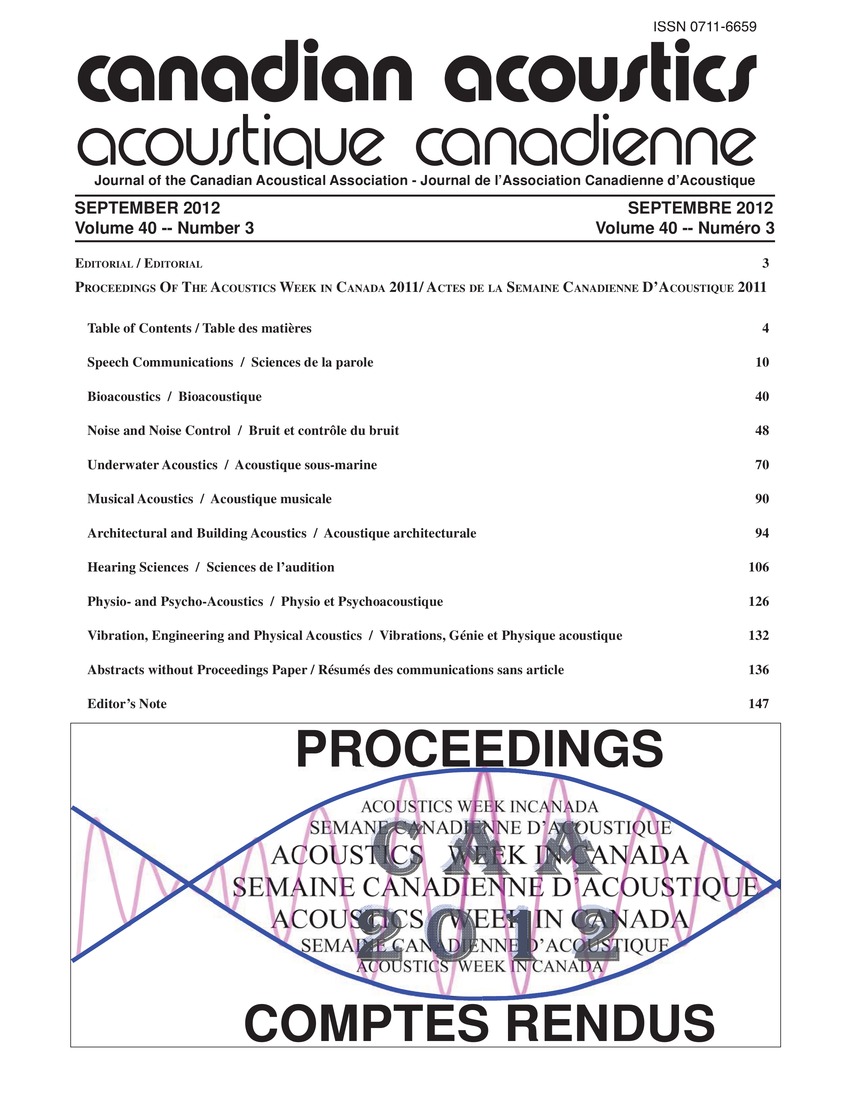Variation of astc ratings due to flanking transmission within a residential conversion
Keywords:
Architectural acoustics, Airborne sound insulation, Flanking transmission, High variability, In-field, Laboratory test, Small rooms, Sound leakage, Sound transmission, Wake fields, Wall constructionAbstract
Swift House is an older building in Victoria's downtown core that originally served warehouse and/or commercial purposes but many years ago was converted to a homeless shelter having many small rooms. Wakefield Acoustics Ltd. conducted a series of Apparent Sound Transmission Class (ASTC) tests between units and found the variability of measured ASTC's to be much wider than typically observed in new condominium buildings. This paper describes the ASTC tests conducted and discusses the suspected reason for the high variability in results. The BCBC recognizes that residential unit demising walls rarely provide the same degree of airborne sound insulation in field (real world) situations as they do in laboratory test situations. Reduced ASTC ratings in field tests are sometimes due to sound leakage via cracks and/or gaps, or to other flaws in wall construction.Additional Files
Published
How to Cite
Issue
Section
License
Author Licensing Addendum
This Licensing Addendum ("Addendum") is entered into between the undersigned Author(s) and Canadian Acoustics journal published by the Canadian Acoustical Association (hereinafter referred to as the "Publisher"). The Author(s) and the Publisher agree as follows:
-
Retained Rights: The Author(s) retain(s) the following rights:
- The right to reproduce, distribute, and publicly display the Work on the Author's personal website or the website of the Author's institution.
- The right to use the Work in the Author's teaching activities and presentations.
- The right to include the Work in a compilation for the Author's personal use, not for sale.
-
Grant of License: The Author(s) grant(s) to the Publisher a worldwide exclusive license to publish, reproduce, distribute, and display the Work in Canadian Acoustics and any other formats and media deemed appropriate by the Publisher.
-
Attribution: The Publisher agrees to include proper attribution to the Author(s) in all publications and reproductions of the Work.
-
No Conflict: This Addendum is intended to be in harmony with, and not in conflict with, the terms and conditions of the original agreement entered into between the Author(s) and the Publisher.
-
Copyright Clause: Copyright on articles is held by the Author(s). The corresponding Author has the right to grant on behalf of all Authors and does grant on behalf of all Authors, a worldwide exclusive license to the Publisher and its licensees in perpetuity, in all forms, formats, and media (whether known now or created in the future), including but not limited to the rights to publish, reproduce, distribute, display, store, translate, create adaptations, reprints, include within collections, and create summaries, extracts, and/or abstracts of the Contribution.


